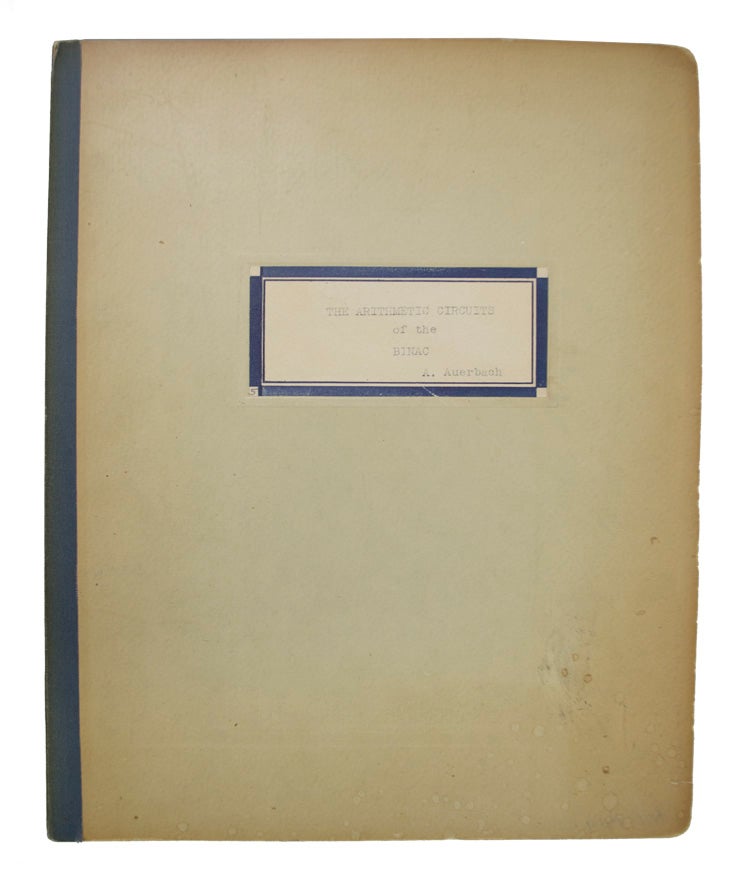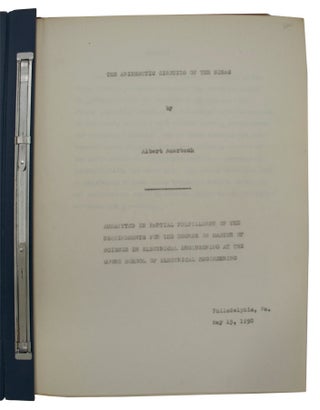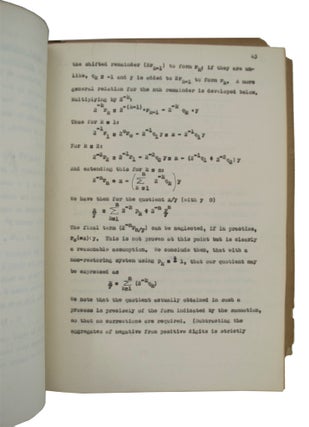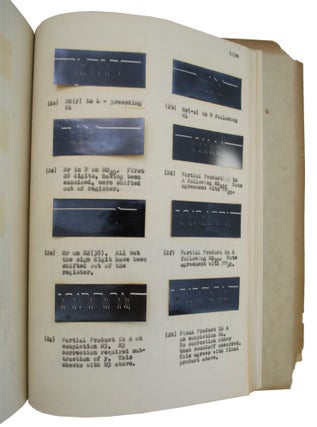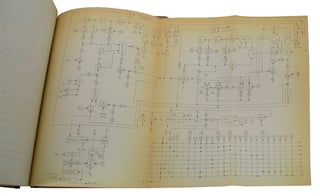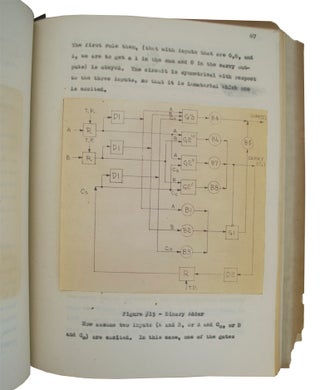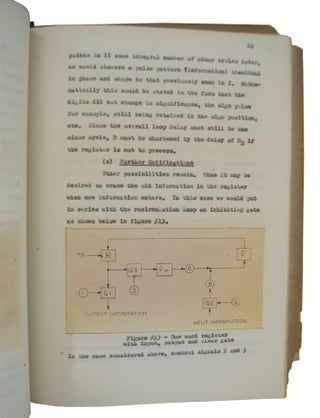An Original Copy of Auerbach's Master's Thesis on the Arithmetic Circuits of BINAC, the First Operational Stored-program Computer in the United States
Arithmetic Circuits of the BINAC. Submitted in Partial Fulfillment of the Requirements for the Degree of Master of Science in Electrical Engineering at the Moore School of Electrical Engineering.
Philadelphia: By the Author, 1950.
An original copy of Auerbach's Master's thesis on the Arithmetic Circuits of BINAC. With thirty-four block diagram figures all reproduced from Auerbach's own drawings, seven of which are full page, the others are tipped in, Of the full page figures, three are folding. With sixty-seven small (2 3/4 x 1 inch ) black-and-white photographs of oscillograms taken at different points in the arithmetic process. With some minor of pen and ink corrections and notes throughout.
Original carbon typescript housed in original cardboard binder with typescript label on front. (8 1/2 x 11 inches; 280 x 220 mm). First part with page numbers a bit erratic but seemingly complete with a total of 152 leaves. Cardboard binding a bit toned and brittle, and back corners are chipped off. According to Jeremy Norman, most likely only one or two other copies of this exist.
"Auerbach submits as his thesis for the Master of Science in Electrical Engineering the most comprehensive account of the BINAC ever written. Only a much-abbreviated version will be published in the Trans IEEE" (Designing the First Stored-Program Electronic Computer at the World’s First Electronic Computer Company: The Albert A. Auerbach Collection. Jeremy Norman. pg 2).
The BINAC is the first operational stored-program computer in the United States, preceded only by the British Manchester "Baby" by a few months. A stored-program computer is a computer that stores the program instructions in the electronic memory, rather than externally. It was also the first electronic computer produced for sale. The BINAC was created by the Eckert-Mauchly Computer Corporation. Pres Eckert and John Mauchly had created the worlds first electronic computer, the ENIAC in 1945. In 1947 they started work on the BINAC. On their team was Albert Auerbach who worked "on designing a high speed serial binary adder demonstration unit that would work at a 5 MHz rate, " the "high speed decimal adder" and "the accumulator and one word registers." "The machine had two processors, each with 700 tubes, and could perform 3500 additions or subtractions, or 1000 multiplications or divisions per second. The two processors (essentially two computers linked to each other) were unique, because they gave the BINAC the capacity to check itself for accuracy...." "Even though it is recognized that the BINAC included numerous hardware and software innovations, very little about its design and operation is known. Probably because of the scarcity of BINAC documentation, none of the histories of computing discuss it in any detail. One of the only books to include information on its design and engineering is Herman Lukoff’s From Dits to Bits: A Personal History of the Electronic Computer (1979)... Apart from the collection in the Sperry-Univac Company Papers at Hagley Museum’s Eleutherian Mills Historical Library in Delaware, virtually no primary material on the BINAC is preserved. The Origins of Cyberspace Library contained only a very few documents on the BINAC" (Designing the First Stored-Program Electronic Computer at the World’s First Electronic Computer Company: The Albert A. Auerbach Collection. Jeremy Norman, pg 1-3).
Norman "The Albert A. Auerbach Collection", 29.
HBS 68177.
$7,500.
Price: $7,500.00
Item #68177

